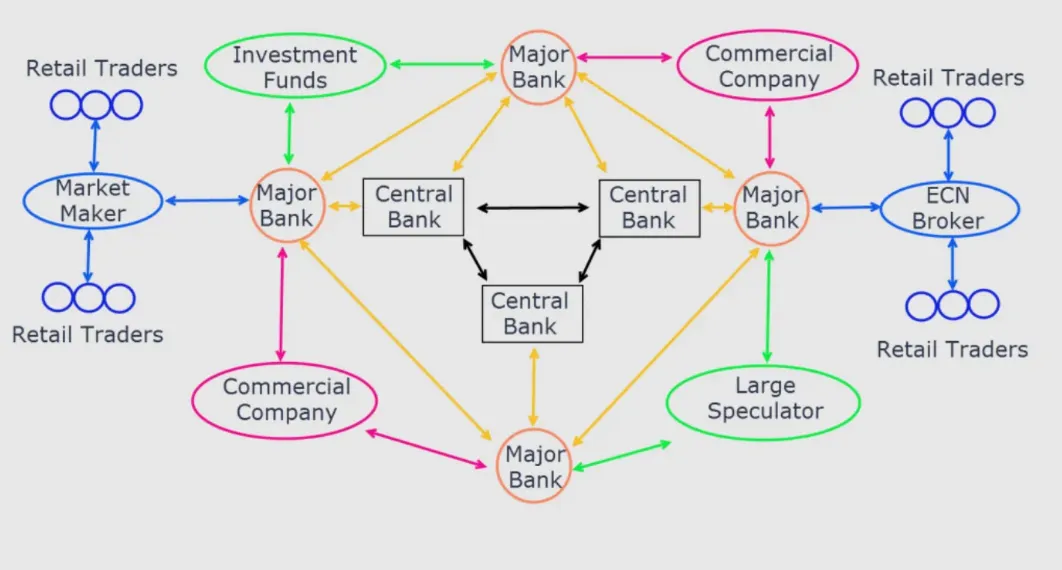The role of central bank announcements in foreign exchange trading
Summary:Central banks are the cornerstone institutions of the modern financial system, tasked with maintaining economic stability, controlling inflation, and promoting sustainable growth. Their policy decisions, announced through official announcements, are among the most closely watched events in global markets.

The role of central bank announcements in foreign exchange trading
introduction
Central banks are cornerstone institutions of the modern financial system, tasked with maintaining economic stability, controlling inflation, and promoting sustainable growth. Their policy decisions, announced through official announcements, are among the most closely watched events in global markets. For forex traders, central bank announcements are crucial, often triggering significant volatility in currency pairs and creating a trading environment that presents both opportunities and risks.
This article explores how central bank announcements, such as interest rate decisions and forward guidance, impact the foreign exchange market. We focus on the world's most influential central banks: the Federal Reserve (FOMC), the European Central Bank (ECB), the Bank of Japan (BoJ), and the Bank of England (BoE). Integrating BrokerHiveX's forex trading tools, this article demonstrates how traders can leverage advanced tools and authoritative data to navigate these high-impact events more efficiently and confidently.
Understand the central bank and its monetary policy responsibilities
Major central banks and their functions
Federal Reserve (FOMC)
The Federal Reserve, through the Federal Open Market Committee (FOMC), sets U.S. monetary policy, profoundly impacting global financial markets. The FOMC's decisions on the federal funds rate directly influence borrowing costs, capital flows, and the value of the U.S. dollar. For example, in 2025, the Fed maintains its interest rate range of 4.25%-4.50%, a stance that shapes U.S. dollar pairs and global risk sentiment ( source ).
European Central Bank (ECB)
The ECB is responsible for monetary policy across the eurozone, maintaining price stability with a 2% inflation target. Its policy decisions, such as the expected interest rate cut in June 2025, have triggered volatility in the euro, with the EUR/USD pair falling to a two-month low ( source ). The ECB's transparency and press conferences significantly influence market expectations ( source ).
Bank of Japan (BoJ)
The BoJ faces unique challenges from low inflation and unconventional policies like negative interest rates and yield curve control. In 2025, the BoJ adopted a cautious approach to tightening policy, leading to a depreciation of the yen and official warnings about potential intervention ( source ).
Bank of England (BoE)
The BoE manages the UK's monetary policy, maintaining a balance between controlling inflation and promoting economic growth. Its decisions on the bank rate and asset purchases influence GBP currency pairs and broader market sentiment, particularly amidst the post-Brexit economic adjustment.
Core monetary policy tools affecting the foreign exchange market
Interest rate decision: The most direct tool that influences the attractiveness of a currency. Raising interest rates generally boosts a currency, while lowering it weakens it ( source ).
Quantitative easing (QE) and quantitative tightening (QT): QE increases the money supply and may weaken the currency; QT has the opposite effect.
Forward guidance: The central bank communicates its future policy intentions, which can influence market expectations even if the policy remains unchanged ( source ).
Direct market intervention: Occasionally intervene in exchange rates by buying or selling currencies, usually to address excessive volatility.
How Central Bank Announcements Affect Forex Trading
Impact mechanism on exchange rate
Interest rate changes and capital flows: Higher interest rates attract foreign capital, pushing up the currency; and vice versa ( source ).
Forward Guidance and Market Sentiment: Small adjustments in tone or wording can have a significant impact on market expectations.
Quantitative easing effect: QE increases liquidity and often leads to currency depreciation.
Policy divergence: When major central banks take opposite actions (e.g. the Fed raises interest rates while the ECB cuts them), currency pair volatility increases, creating trading opportunities.
Market reaction to key announcements
Common fluctuation patterns
Central bank meetings often see quiet trading before the meeting and sharp fluctuations afterward. For example, FOMC announcements can trigger large moves in USD currency pairs, while ECB decisions can drive the EUR and related crosses.
Case Studies
2025 Federal Reserve Interest Rate Decision: The Fed’s policy stability supports the US dollar, especially relative to other central bank currencies that have adopted an accommodative stance ( source ).
ECB rate cuts in 2025: Expectations and implementation of rate cuts led to a depreciation of the Euro, with EUR/USD falling below key support ( source ).
BoJ policy signals: BoJ reluctance to raise rates fuels yen weakness, official warnings of intervention ( source ).
The role of economic data
Traders often use leading indicators such as inflation, employment and the Purchasing Managers' Index (PMI) to predict central bank moves and make arrangements in advance.
Trading strategies around central bank announcements
Pre-announcement layout and analysis
Track key events with financial news and the economic calendar.
Analyze the "hawkish" or "dovish" tone in the statement and assess market expectations.
Develop trading plans for multiple possible outcomes.
Post-announcement response strategies
Volatility breakout strategy: Use charts to identify breakout levels and trade with the trend.
Automated trading system: quickly parses central bank language and executes transactions.
Managing slippage and spread widening: Be extra vigilant when liquidity decreases during announcements.
Risk Control Strategies
Control positions and leverage to avoid magnifying profits while increasing risks.
Set wider stops and realistic profit targets.
Use hedges or options to reduce the risk of adverse fluctuations ( source ).
Integrating foreign exchange tools into central bank announcement analysis
Key tool recommendations
Financial news and alerts tool.
Sentiment and volatility indicators.
Automated trading trigger mechanism.
Charting tools: candlestick charts, volume analysis, event markers.
Broker selection advice
Choose a regulated, compliant broker from global broker rankings and regulatory databases .
Focus on execution speed, spread and risk control capabilities.
Broker information must be transparent, including slippage, stop-loss and order execution mechanisms.
Interpreting Central Bank Communications: Forward Guidance and Market Sentiment
Understanding the terms "hawk" and "dovish"
Hawks: tend to raise interest rates, which is conducive to currency appreciation.
Dovish: tends to be loose, which is conducive to currency depreciation.
2025 example: A hawkish FOMC supports the USD, while a dovish ECB weighs on the EUR ( source ).
How to interpret meeting minutes and press conferences
Subtle changes in language, such as removing “patient,” could signal a policy shift.
Divergent votes among policymakers could foreshadow future policy changes.
Use BrokerHiveX data to help you make decisions
Browse expert analysis for authoritative interpretation.
Follow financial news in real time.
2025 Central Bank Meeting Calendar and Latest Policy Developments
Main meeting schedule
FOMC: Focus on inflation and employment, full-year meeting.
ECB: Every six weeks, focusing on the eurozone recovery.
BoJ and BoE: Synchronize domestic data with international developments.
Policy changes and market impact
The Federal Reserve maintained interest rates at 4.25%-4.50%, boosting the US dollar.
The ECB lowered it to 2.5%, and the euro depreciated.
The Bank of Japan initiated the process of policy normalization, causing fluctuations in the yen (see related sources above).
The impact of central bank announcements on multi-asset markets
Asset classes involved
Bond market: Policy changes affect yields and currency values.
Stock Market: Changes in risk appetite drive or suppress the stock market.
Commodities: Inflation and growth expectations affect commodities such as gold and oil.
The FX Assistance of Multi-Asset Signals
Rising interest rates support the local currency, while falling interest rates do the opposite.
Rising volatility indices such as the VIX signal safe-haven demand.
Commodity prices reflect inflation or changes in demand.
in conclusion
Central bank announcements are among the most influential factors in the foreign exchange market. Interest rate hikes, quantitative easing, or even verbal guidance can impact currencies, trigger volatility, and create abundant trading opportunities. By integrating authoritative data, expert interpretation, and BrokerHiveX tools, traders can make more accurate and efficient decisions and execute trades.
We recommend making full use of the comprehensive resources provided by BrokerHiveX , including rankings, regulatory libraries, real-time news and expert information, to make more robust central bank trading decisions.
Please remember: the greater the opportunity, the higher the risk. Reasonable risk control and continuous learning are the keys to long-term success in foreign exchange trading.
Appendix/Resource Summary
Glossary
| the term | definition |
|---|---|
| Hawkish | It tends to raise interest rates to curb inflation, which is good for the currency. |
| Dovish | It tends to cut interest rates to stimulate growth, which is bearish for the currency. |
| Quantitative Easing (QE) | The central bank purchases bonds to inject liquidity. |
| Forward Guidance | Advance communication of future policy intentions. |
| Policy Divergence | Different central banks have divergent policy directions, increasing volatility. |
Useful links
Disclaimer: Forex trading carries a high degree of risk and is not suitable for all investors. This content is for educational purposes only and does not constitute investment advice. Please consult a qualified financial advisor and refer to the Risk Disclosure before trading.
⚠️Risk Warning and Disclaimer
BrokerHivex is a financial media platform that displays information sourced from the public internet or uploaded by users. BrokerHivex does not endorse any trading platform or instrument. We are not responsible for any trading disputes or losses arising from the use of this information. Please note that the information displayed on the platform may be delayed, and users should independently verify its accuracy.

